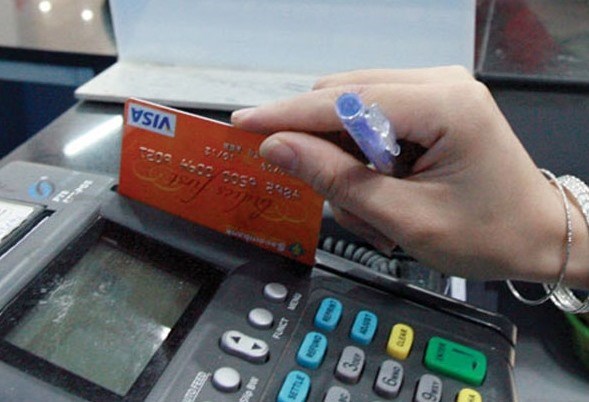Gov’t policy must spur e-payment: MoIT
Vietnam should develop breakthrough policies to create momentum for the further development of electronic payments to meet the growth of e-commerce.
 The Government should review legal documents to develop the e-payment market, which is expected to hold huge potential for Viet Nam’s young population (PhotoL doanhnghiepbacgianghcm.vn)
The Government should review legal documents to develop the e-payment market, which is expected to hold huge potential for Viet Nam’s young population (PhotoL doanhnghiepbacgianghcm.vn)Hanoi (VNA) - Vietnam should develop breakthrough policies to create momentum for the further development of electronic payments to meet the growth of e-commerce, said Pham Nguyen Minh, Director of the Institute for Trade Research and Development under the Ministry of Industry and Trade.
Minh told the conference on the future of card payment and electronic money held in Hanoi on November 22 that the development of card payments and e-wallets in Vietnam had not met its potential and taken advantage of e-commerce. The slow development could affect e-commerce in particular and the country’s socio-economic outlook in general while increasing costs for local cash management.
“E-commerce has become a growing trend across the world, thus making card payments and e-wallets a popular payment method in many countries, including Vietnam,” he added.
Card payments take up the highest proportion of the e-payment sector despite the slow growth rate. According to a World Bank report, in 2014, card payment revenue was 979 billion USD and would increase to 989 billion USD by 2019. E-wallets would see a surge and become the second most popular payment method, with revenue of 674 billion USD, by 2019, from 387 billion USD in 2014.
In Vietnam, another report from Banking Vietnam showed that by the end of last month, the number of issued cards was 99.5 million. Vietnam has around 17,000 ATMs and 30,000 devices accepting cards. In 2015, there were up to 22.2 million customers paying by cards.
The revenue from card payment has also been on the rise. The revenue increased from more than 724 trillion VND in 2011 to 1.6 quadrillion VND in 2015.
Credit cards have been diversified. Most international brand names such as American Express, Visa, MasterCard, JCB, Diners Club, Discover and UnionPay now provide services in Vietnam.
The director said the card payment market and its potential in Vietnam have seen strong growth. However, there are still shortcomings as the issue of credit cards has paid attention to the quantity but not quality. The proportion of local cards, though currently accounting for a high rate at 91 percent, has a tendency to decrease in the card structure.
Meanwhile, most card payments were made through ATM (85 percent) while the remaining payments were e-payments. The rate of cards under operation was 60-70 percent.
Dr Le Huy Khoi from the institute said the Vietnamese people’s habit of using cash has dominated, especially in rural areas. The ATM system has not been distributed evenly despite rapid development. ATMs have been mostly located in urban areas.
In addition, the lending interest rate through cards has been at a high level, together with annual fees, cash withdrawal fees and foreign exchange fees.
Dr Nguyen Thi Nhieu said the Government should review legal documents to develop the market which is expected to hold huge potential for the young population, high rate of mobile phone users and internet together with the continuously improving technology infrastructure.
Management agencies and businesses should provide more services that avoid cash to encourage people to use cards.
Credit institutions should ensure the security of the payment system while strictly implementing regulations to minimize risks.
Experts also proposed regulations on businesses requiring payments through banks to increase transparency of their income and tax management.
Banks were asked to enhance investment in modern technologies, especially card devices while improving card service quality. They should also gradually reduce interest rates and fees to encourage people to adopt card usage.-VNA













